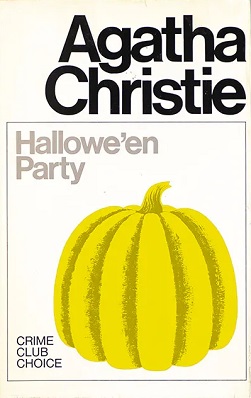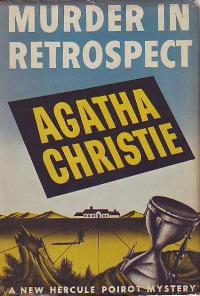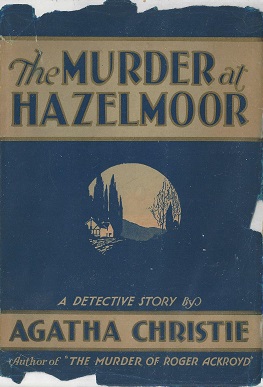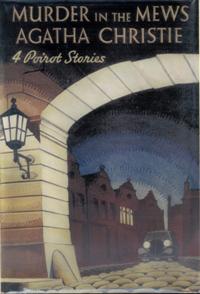
Dame Agatha Mary Clarissa Christie, Lady Mallowan, was an English writer known for her 66 detective novels and 14 short story collections, particularly those revolving around fictional detectives Hercule Poirot and Miss Marple. She also wrote the world's longest-running play, the murder mystery The Mousetrap, which has been performed in the West End since 1952. A writer during the "Golden Age of Detective Fiction", Christie has been called the "Queen of Crime". She also wrote six novels under the pseudonym Mary Westmacott. In 1971, she was made a Dame (DBE) by Queen Elizabeth II for her contributions to literature. Guinness World Records lists Christie as the best-selling fiction writer of all time, her novels having sold more than two billion copies.
Miss Jane Marple is a fictional character in Agatha Christie's crime novels and short stories. Miss Marple lives in the village of St. Mary Mead and acts as an amateur consulting detective. Often characterized as an elderly spinster, she is one of Christie's best-known characters and has been portrayed numerous times on screen. Her first appearance was in a short story published in The Royal Magazine in December 1927, "The Tuesday Night Club", which later became the first chapter of The Thirteen Problems (1932). Her first appearance in a full-length novel was in The Murder at the Vicarage in 1930, and her last appearance was in Sleeping Murder in 1976.

Sisera was commander of the Canaanite army of King Jabin of Hazor, who is mentioned in Judges 4–5 of the Hebrew Bible. After being defeated by the forces of the Israelite tribes of Zebulun and Naphtali under the command of Barak and Deborah, Sisera was killed by Jael, who hammered a tent peg into his temple while he slept.

The A.B.C. Murders is a work of detective fiction by British writer Agatha Christie, featuring her characters Hercule Poirot, Arthur Hastings and Chief Inspector Japp, as they contend with a series of killings by a mysterious murderer known only as "A.B.C.". The book was first published in the UK by the Collins Crime Club on 6 January 1936, sold for seven shillings and sixpence (7/6) while a US edition, published by Dodd, Mead and Company on 14 February of the same year, was priced $2.00.

Hallowe'en Party is a work of detective fiction by English writer Agatha Christie, first published in the United Kingdom by the Collins Crime Club in November 1969 and in the United States by Dodd, Mead and Company later in the same year. This book was dedicated to writer P. G. Wodehouse. It has been adapted for television, radio, and most recently for the film A Haunting in Venice (2023).
Ariadne Oliver is a fictional character in the novels of Agatha Christie. She is a crime fiction novelist, the creator of the fictional Finnish detective Sven Hjerson, and a friend of Hercule Poirot.

After the Funeral is a work of detective fiction by Agatha Christie and first published in the US by Dodd, Mead and Company in March 1953 under the title of Funerals are Fatal and in UK by the Collins Crime Club on 18 May of the same year under Christie's original title. The US edition retailed at $2.50 and the UK edition at ten shillings and sixpence (10/6).

Five Little Pigs is a work of detective fiction by British writer Agatha Christie, first published in the US by Dodd, Mead and Company in May 1942 under the title Murder in Retrospect and in the UK by the Collins Crime Club in January 1943. The UK first edition carries a copyright date of 1942 and retailed at eight shillings while the US edition was priced at $2.00.

The Moving Finger is a detective novel by British writer Agatha Christie, first published in the USA by Dodd, Mead and Company in July 1942 and in the UK by the Collins Crime Club in June 1943. The US edition retailed at $2.00 and the UK edition at seven shillings and sixpence.

Dead Man's Folly is a work of detective fiction by Agatha Christie, first published in the US by Dodd, Mead and Company in October 1956 and in the UK by the Collins Crime Club on 5 November of the same year. The US edition retailed at $2.95 and the UK edition at twelve shillings and sixpence (12/6). It features Hercule Poirot and Ariadne Oliver.

The Sittaford Mystery is a work of detective fiction by British writer Agatha Christie, first published in the US by Dodd, Mead and Company in 1931 under the title of The Murder at Hazelmoor and in UK by the Collins Crime Club on 7 September of the same year under Christie's original title. It is the first Christie novel to be given a different title for the US market. The US edition retailed at $2.00 and the UK edition at seven shillings and sixpence (7/6).

Appointment with Death is a work of detective fiction by British writer Agatha Christie, first published in the UK by the Collins Crime Club on 2 May 1938 and in the US by Dodd, Mead and Company later in the same year. The UK edition retailed at seven shillings and sixpence (7/6) and the US edition at $2.00.

Why Didn't They Ask Evans? is a work of detective fiction by Agatha Christie, first published in the United Kingdom by the Collins Crime Club in September 1934 and in the United States by Dodd, Mead and Company in 1935 under the title of The Boomerang Clue. The UK edition retailed at seven shillings and sixpence (7/6) and the US edition at $2.00.

Murder Is Easy is a detective fiction novel by Agatha Christie first published in the UK by the Collins Crime Club in June 1939, and in the US by Dodd, Mead and Company in September the same year under the title Easy to Kill. Christie's Superintendent Battle has a cameo appearance at the end, but plays no part in either the solution of the mystery or the apprehension of the criminal. The UK edition retailed at seven shillings and sixpence (7/6), and the US edition at $2.

Towards Zero is a work of detective fiction by Agatha Christie first published in the US by Dodd, Mead and Company in June 1944, and in the UK by the Collins Crime Club in July of the same year. The first US edition of the novel retailed at $2.00 and the UK edition at seven shillings and sixpence (7/6).

The Pale Horse is a work of detective fiction by British writer Agatha Christie, first published in the UK by the Collins Crime Club on 6 November 1961, and in the US by Dodd, Mead and Company the following year. The UK edition retailed at fifteen shillings and the US edition at $3.75. The novel features her novelist detective Ariadne Oliver as a minor character, and reflects in tone the supernatural novels of Dennis Wheatley who was then at the height of his popularity. The Pale Horse is mentioned in Revelation 6:8, where it is ridden by Death.

Jael or Yael is a heroine of the Battle of Mount Tabor, described in chapters 4 and 5 of the Book of Judges. In the account, she delivers the Israelites from the army of King Jabin of the city of Hazor in Canaan. After Barak demurs at the behest of the prophetess Deborah, God turns Sisera over to Jael, who kills him by driving a tent peg through his skull after he enters her tent near the great tree in Zaanaim near Kedesh.

Murder in the Mews and Other Stories is a short story collection by British writer Agatha Christie, first published in the UK by Collins Crime Club on 15 March 1937. In the US, the book was published by Dodd, Mead and Company under the title Dead Man's Mirror in June 1937 with one story missing ; the 1987 Berkeley Books edition of the same title has all four stories. All of the tales feature Hercule Poirot. The UK edition retailed at seven shillings and sixpence (7/6) and the first US edition at $2.00.
Personal Call is a half-hour radio play written by Agatha Christie and first performed on the BBC Radio Light Programme on Monday, 31 May 1954. The play reuses the character of Inspector Narracott from the 1931 novel The Sittaford Mystery.

Agatha Christie (1890–1976) was an English crime novelist, short-story writer and playwright. Her reputation rests on 66 detective novels and 15 short-story collections that have sold over two billion copies, an amount surpassed only by the Bible and the works of William Shakespeare. She is also the most translated individual author in the world with her books having been translated into more than 100 languages. Her works contain several regular characters with whom the public became familiar, including Hercule Poirot, Miss Marple, Tommy and Tuppence Beresford, Parker Pyne and Harley Quin. Christie wrote more Poirot stories than any of the others, even though she thought the character to be "rather insufferable". Following the publication of the 1975 novel Curtain, Poirot's obituary appeared on the front page of The New York Times.
















